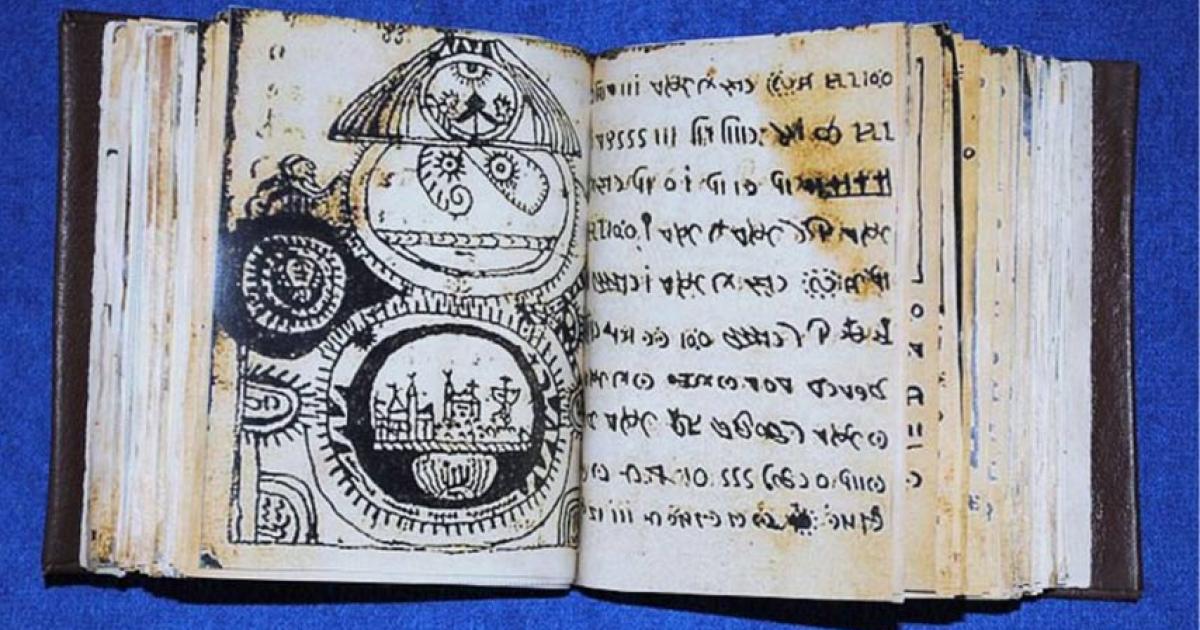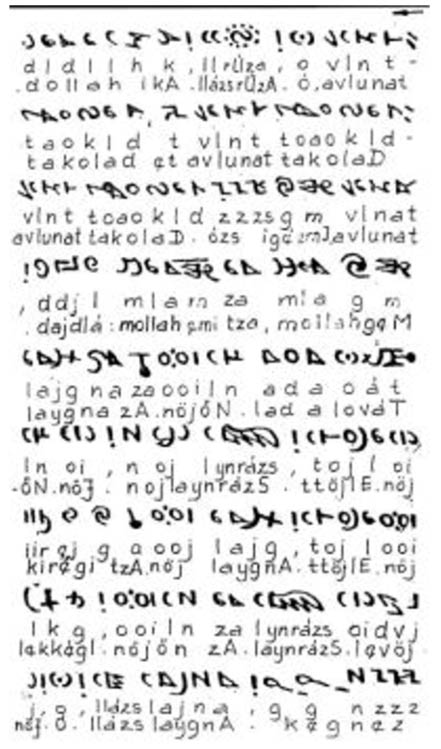
An ancient text that has baffled researchers for more than 200 years - The indecipherable Rohonc Codex
The discovery of an unidentified text in Hungary has led to more than 200 years of attempts to determine who authored it and to decipher its contents. Many scholars have studied the text, known as the Rohonc Codex, in an effort to understand its meaning and to determine who wrote it and when it was drafted. However, these efforts have been futile to date, as the meaning and origin of the text still remain a mystery.
The Rohonc Codex was discovered in Hungary in the 1800s. It is believed to have been part of the personal library of Count Gusztáv Batthyány, before he donated his entire personal library to the Hungarian Academy of Sciences. When the Codex surfaced, it initially appeared to be from medieval times. However, the text, which appears to resemble Old Hungarian script, was completely indecipherable. The mysterious text led many to wonder what the writings meant, who wrote it, and what purpose it served. Many of these questions remain to be answered, as the author has not been identified, and the text has yet to be translated.

Page 41 of the Rohonc Codex. Public Domain
In total, the Rohonc Codex contains 448 pages of indecipherable text, which is similar to Old Hungarian script, as they are both written with a right-to-left orientation, and have similar combinations of straight and rounded characters. Scholars have asserted that in reality, the writing could be anything from Hindi to Old Hungarian, although it lacks features from each of those written languages. The number of different symbols used is considered to be extremely high, with ten times more symbols than are found in any known alphabet.
The paper within the Codex has the unique characteristic of being watermarked. Each page contains the watermark, which has the appearance of an anchor, which is within a circle, which is within a six-rayed star. The watermark itself appears to date to 1529-1540 AD, although the actual Codex appears to have been written much earlier than that. This discrepancy makes it difficult to determine exactly when the text was written, although it is possible that the book was transcribed after its initial creation.
The Codex contains more than just written text – it is also accompanied by 87 illustrations depicting military battles, landscapes, and religious icons, which are said to hint at several different religions, including Christianity, Hinduism, and Islam. Some have interpreted this to show that whichever culture was responsible for creating the text was one within which the three religions co-existed.

Illustration in the Rohonc Codex. Public Domain
Attempts at translating the Codex have led to several theories. There is much variation in these theories, as scholars have not even been able to agree on the orientation of the text. Researcher Marius-Adrian Oancea has hypothesized that the text is the Old Hungarian alphabet (known as székely rovásírás or székely-magyar rovás), and that the contents revolve around topics from the New Testament. This is called the Old Hungarian Alphabet hypothesis.

Page 51, text and illustration from the Rohonc Codex. Public Domain
Mahesh Kumar Singh believes that the text is actually a variation of Brahmi script, from India, and that it should be read left to right, top to bottom. This is known as the Brahmi-Hindi hypothesis. Singh claimed to have transliterated the first 24 pages into Hindi, and then subsequently had those 24 pages translated from Hindi to Hungarian. According to this translation, the Codex begins as an apocryphal gospel, followed by a meditative prologue, and then leads into stories of Jesus during his infancy. A portion of Singh’s translation includes:
he bhagwan log bahoot garib yahan bimar aur bhookhe hai / inko itni sakti aur himmat do taki ye apne karmo ko pura kar sake
Which translated into English, reads:
Oh, my God! Here the people is very poor, ill and starving, therefore give them sufficient potency and power that they may satisfy their needs.
However, Singh’s translation was quickly criticized as lacking consistency, and most consider his translation to be a hoax.
Viorica Enăchiuc has attempted a translation as well, leading to the conclusion that the script is intended to be read right to left, bottom to top, and that it is written in the Vulgar Latin dialect of Dacia. This is called the Daco-Romanian hypothesis. This translation concludes that the text originated in the 11 th or 12 th century, and that it belongs to the Blaki people, who fought against the Hungarians and Pechenegs. Some of his translations include:
Deteti lis vivit neglivlu iti iti itia niteren titius suonares imi urast ucen
Which translated into English, reads:
In great numbers, in the fierce battle, without fear go, go as a hero. Break ahead with great noise, to sweep away and defeat the Hungarian!
Enăchiuc is also criticized as lacking consistency, and as a linguist and historian, her work is denounced for not being “scientific.”
Finally, Attila Nyíri, of Hungary has proposed that the pages, when turned upside down, are a Sumerian ligature. This is known as the Sumero-Hungarian hypothesis. His translation includes:
Eljött az Istened. Száll az Úr. Ó. Vannak a szent angyalok. Azok. Ó.
Which translated into English, reads:
Your God has come. The Lord flies. Oh. There are the holy angels. Them. Oh.
Like the others, Nyíri’s translation was criticized for lack of consistency. It is said that he took too many liberties with rearranging symbols, which in essence could lead to an infinite number of translations.

Part of Attila Nyíri's attempt to decipher the Rohonc Codex. The image shows the top of folio 19 of the codex, upside down, with transliteration and Hungarian text. Public Domain
Methodical and computer-based attempts at translation have been conducted as well. However, none of these attempts have been successful in actually translating the text of the Codex. Some researchers, like Levente Zoltán Király, have come to widely accepted conclusions about the structure of the book, and the references it contains to the life of Jesus. While this has not led to a definitive conclusion as to the origins or meaning of the Codex, it has helped to debunk any theories that the book itself is a hoax.
It is possible that with further study, the Rohonc Codex will be more fully understood. For now, it remains a textual clue to some of the mysteries of humankind’s ancient past.
Featured image: A copy of the Rohoc Codex (not the original). Public Domain
Sources
The Rohonc Codex – Passing Strangeness. Available from: http://passingstrangeness.wordpress.com/2009/03/07/the-rohonc-codex/
Mystery – The Book of Soyga and The Rohonc Codex – Cool Interesting Stuff. Available from: http://coolinterestingstuff.com/mystery-the-book-of-soyga
Rohonc Codex – Wikipedia. Available from: http://en.wikipedia.org/wiki/Rohonc_Codex
By M R Reese
















Comments
“ Some have interpreted this to show that whichever culture was responsible for creating the text was one within which the three religions co-existed. “
Umm… when have they actually co-existed? Shortly after the creation of Islam, the conquests of Europe began, followed by the crusades, and further conquests, and more crusades, then finally the Inquisition to rid Europe of what was left of those who killed an estimated 250,000,000 europeans over 500 years. It didn’t take long for the Ottoman Empire to subjegate Europe once again and that didn’t end until World War 1.
So either the author is using the term co-exist in the sense that all three religions existed simultaniously, or he thinks that the occupation of Europe was was peaceful coexistance…. *scratches head*
There’s a new perspective on Amazon; The Rohonc Codex, A Working Solution, by J. E. Lee. Should prove interesting and help in the quest for a final translation.
It looks like something totally different...I have some questions would some one be able to email me ...possibly?
Being that the writing system has so many symbols, it is most obviously semantophonetic.
The text looks as though it was written backwards and upside-down.
Pages